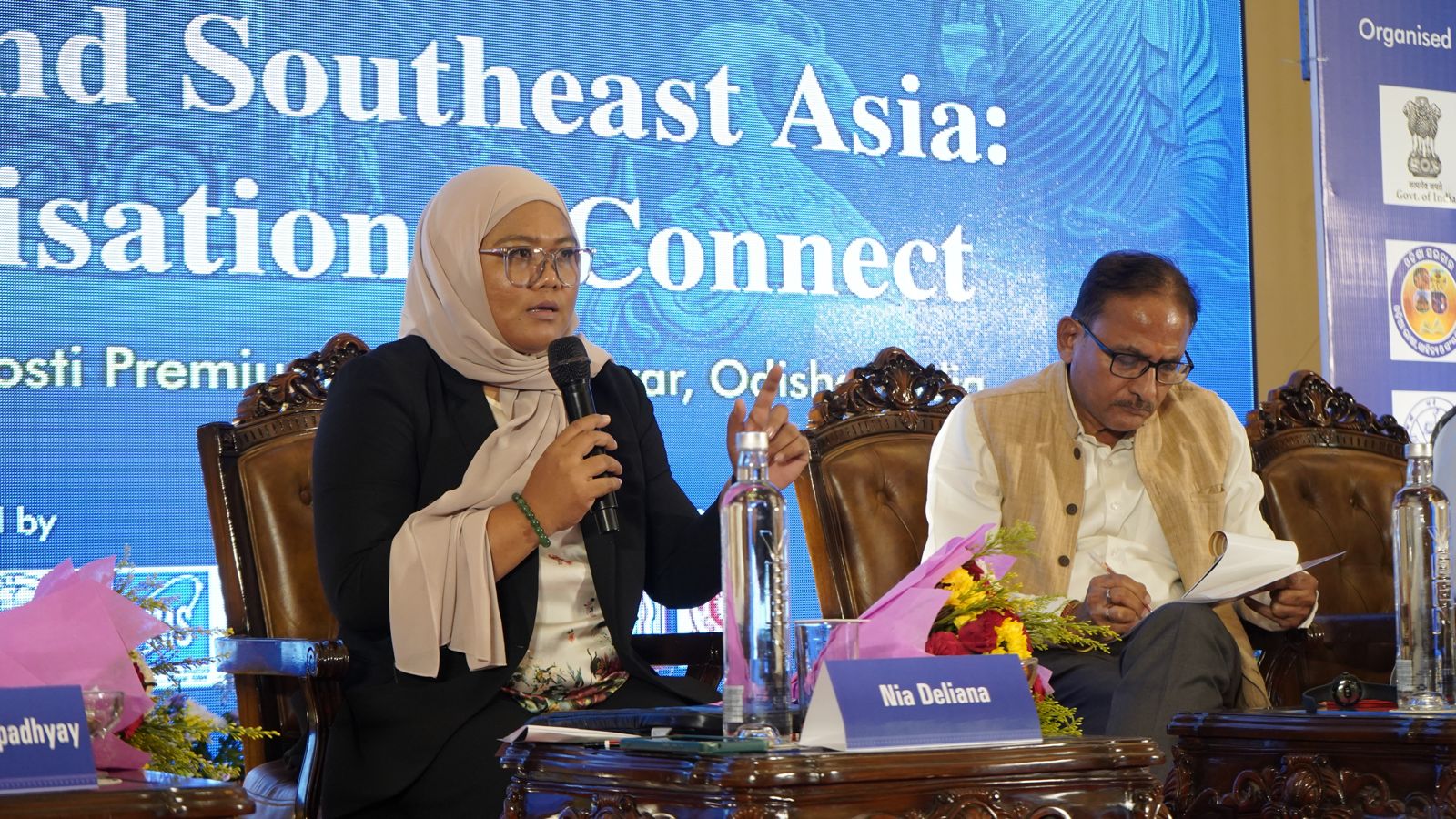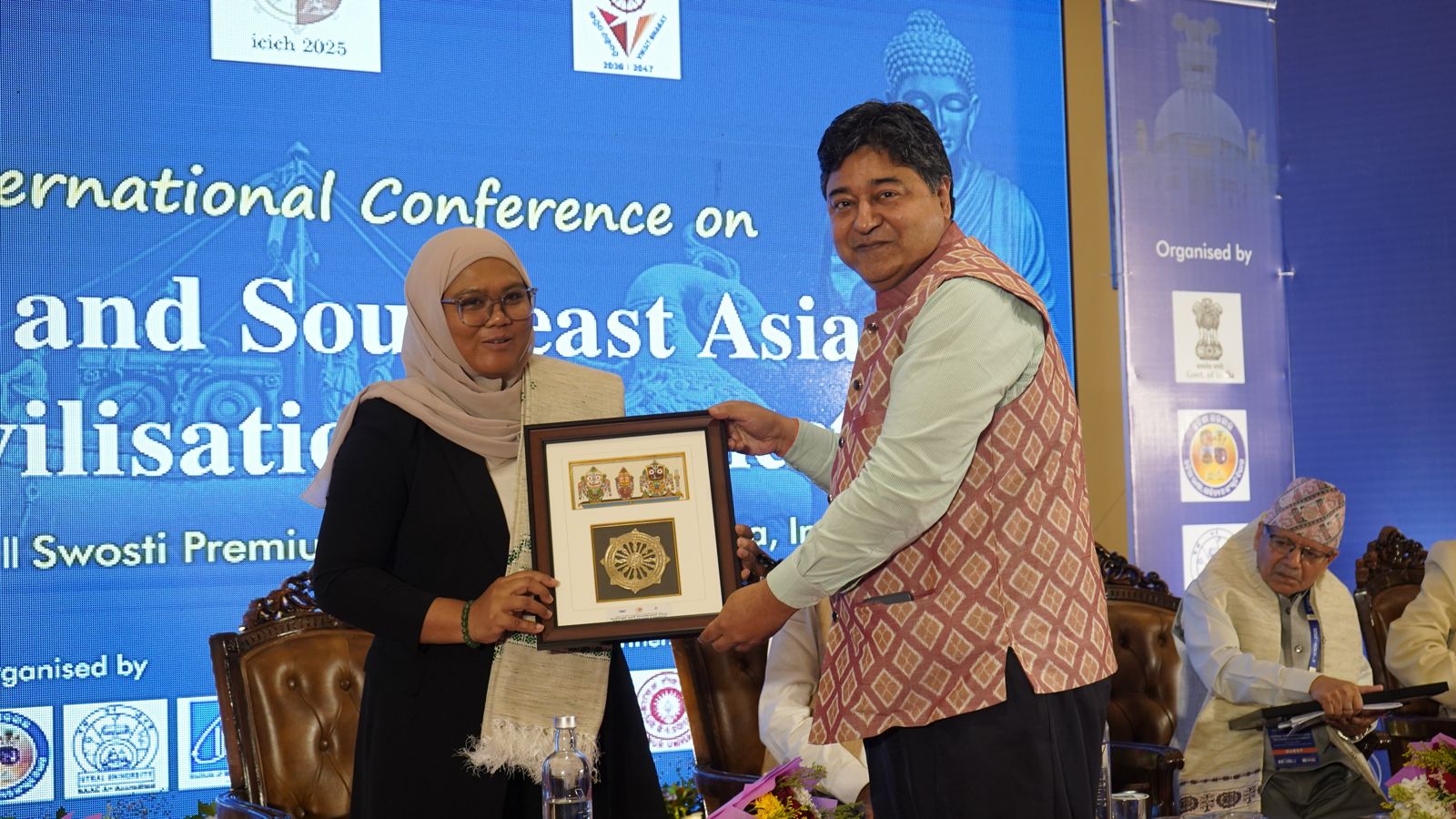May 30, 2025
Contributor: Supriyono | Editor: Dadi Darmadi | Photo: Nia Deliana

In a presentation at the 3rd International Conference on “Kalinga and Southeast Asia: The Civilisation Connect”, Dr. Nia Deliana, a lecturer from the UIII Faculty of Social Sciences (FOSS), shed new light on the lesser-known continuities of Kalinga heritage in Southeast Asia. The conference was held in Bhubaneswar, India, hosted by the Odia Language, Literature & Culture Department (OLL&C), Utkal University, and the Institute of Media Studies, and funded by Odisha Provincial Government.
Dr. Deliana’s speech challenged conventional narratives by arguing that the Kalinga legacy did not end with the ancient kingdom’s collapse in 261 BCE but continued to thrive in Southeast Asia through the agency of Indo-Malay communities. “Most of the history we know about Kalinga stops at the ancient era,” she remarked. “But my research shows that from the 13th century onwards, the Indo-Malay people preserved the Kalinga heritage, particularly through their trade networks and socio-cultural exchanges.”
Drawing from her extensive research for her PhD, Dr. Deliana explored numerous classical texts written in Malay Arabic script, Japanese, and English, which mention references to “Kling“—a term linked to Kalinga—across Southeast Asia. She revealed how these identities were maintained and transformed, notably through maritime trade and the socio-political roles played by Kalinga-descended traders and communities in regions like Sumatra, Malaysia, and Singapore.
Dr. Deliana recounted how the memory of Kalinga was preserved in place names, such as Tanjung Kling, and in the naming of entire regions in classical Southeast Asian texts. Contrary to the racialized and derogatory connotations associated with the term “Kling” in contemporary discourse, she emphasized its historical significance as a marker of prestige and maritime influence.
“Before colonial disruptions, the trade between the Indian subcontinent and Southeast Asia was remarkably peaceful and deeply intertwined,” Dr. Deliana said. “The global order of the Indian Ocean during this time was pluralistic, multicentric, and grounded in mutual respect and interdependence.”

She illustrated how Kalinga-descended traders, including prominent Muslim and Hindu merchants, played pivotal roles as financial advisors, diplomats, and negotiators in Southeast Asian sultanates. Her analysis highlighted figures such as Purvan, a Hindu merchant who mediated between local rulers and British merchants, demonstrating the cosmopolitan and inclusive nature of these maritime networks.
Dr. Deliana concluded with a call to rethink the notion of Kalinga civilization as an exclusively Indian legacy. “The Kalinga civilization is a global heritage,” she asserted. “It belongs not just to Odisha or India, but to the broader world, especially Southeast Asia, where universalism, mutual respect, and socio-economic interdependence have long flourished.”
The conference, attended by scholars, Odisha regional government including Governor Hari Babu Kambhampati, former diplomats, and cultural enthusiasts from across India, Southeast Asia and the world, provided a platform for exploring the deep-rooted cultural, historical, and economic ties connecting Kalinga with the wider Asian region. Dr. Deliana’s presentation underscored the need for further research into Southeast Asia’s role in preserving and extending the Kalinga legacy.
Universitas Islam Internasional Indonesia